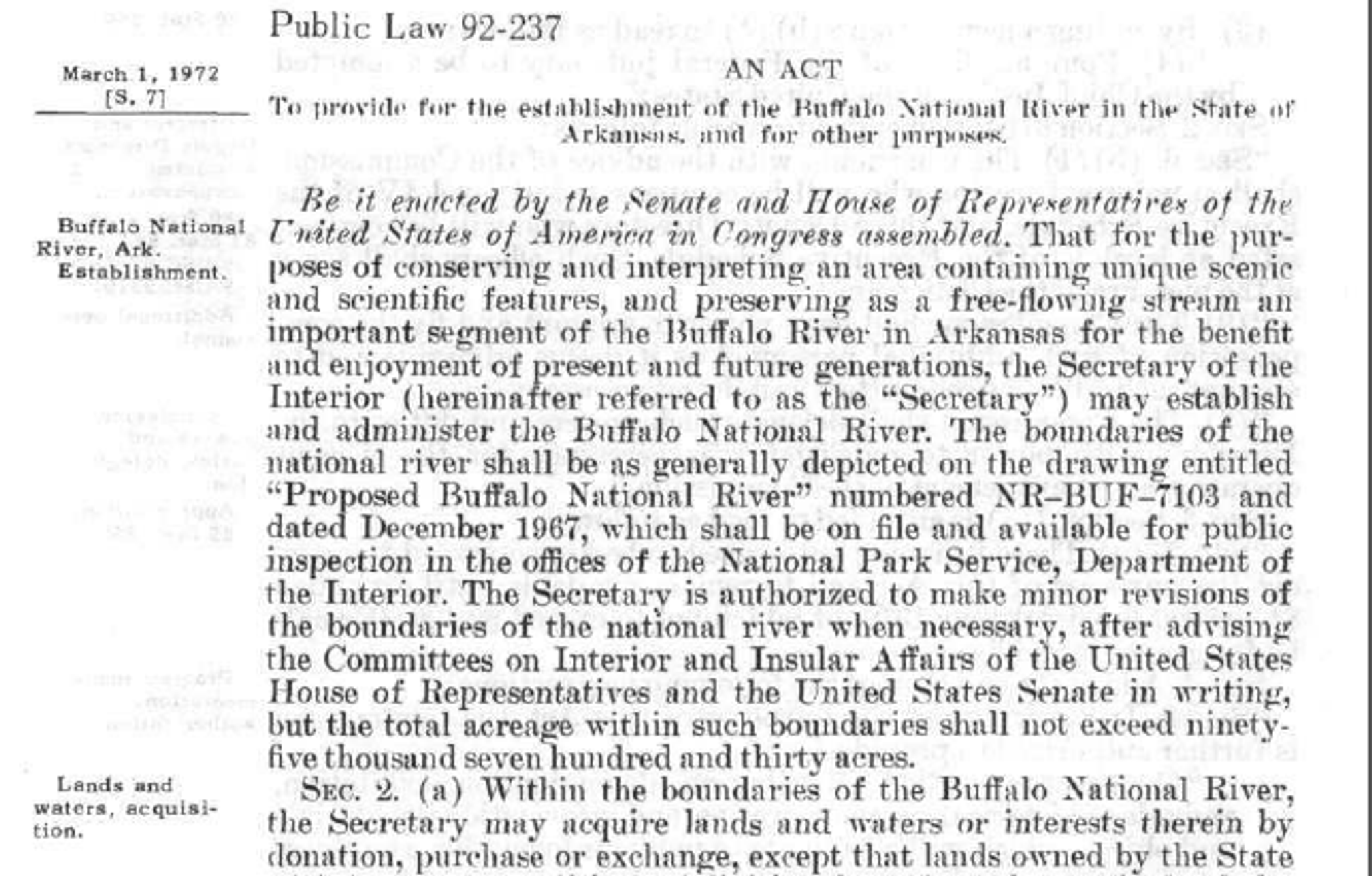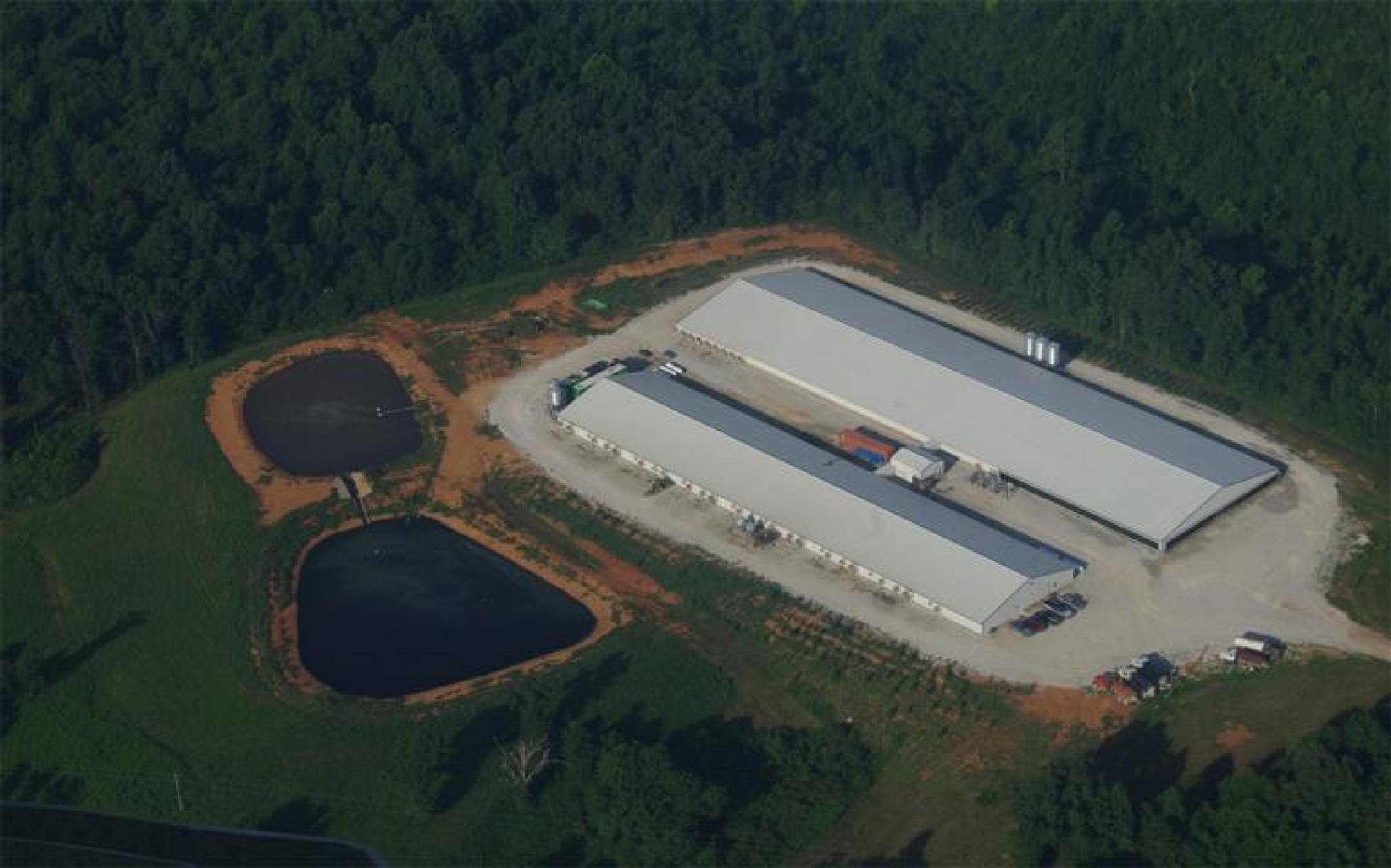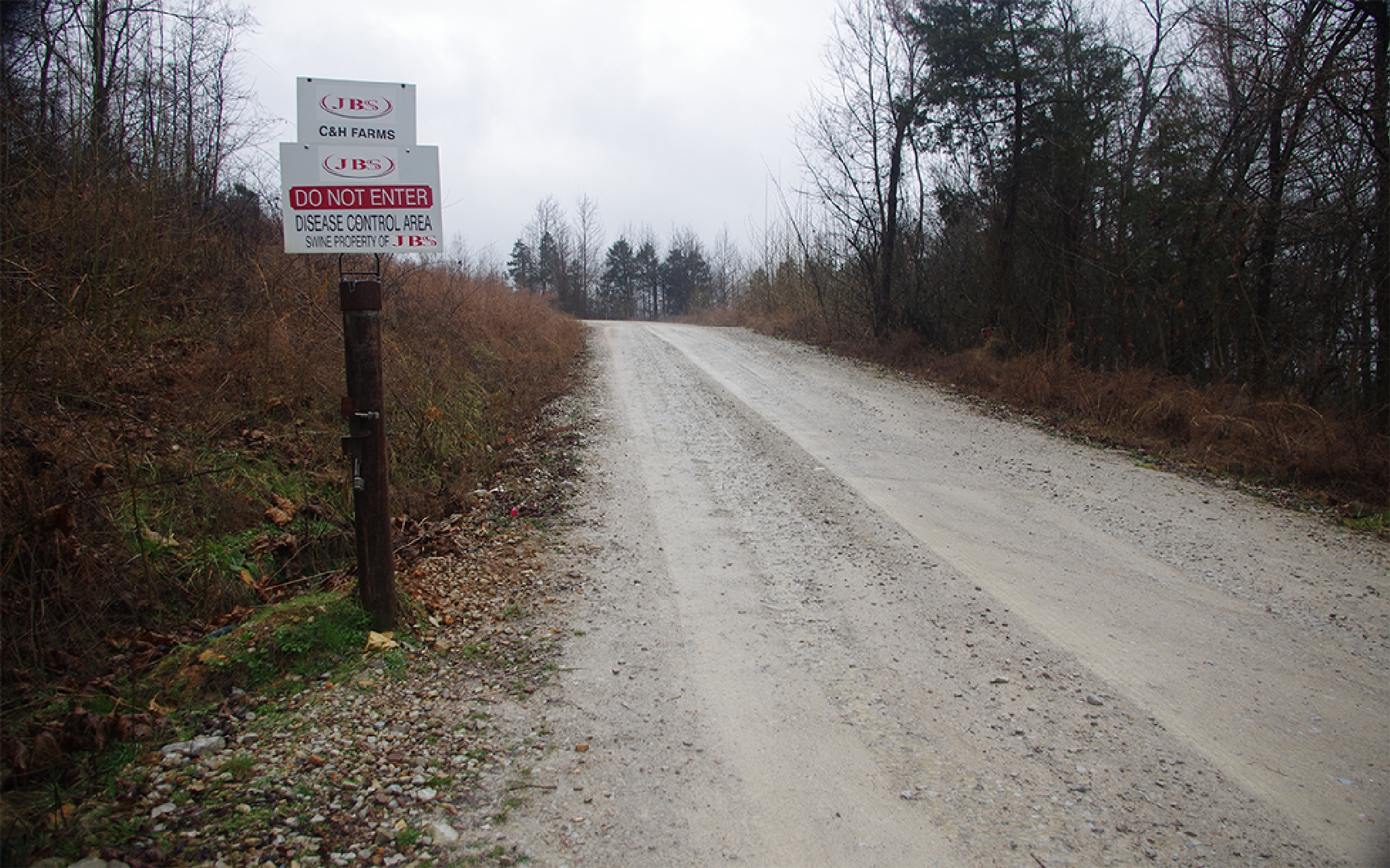Summer 2019
Water and Fire
– Bret Schulte
Environmentalists are winning the battle to keep an Arkansas river clean. So why does history keep them looking over their shoulders?
We caught our first glimpse of the old Hedges homestead after a slog through the woods that crowd up against the Buffalo National River. Among the shards of light and leaf, two chimneys loomed—earthy brown fieldstone stacked as cleanly as Jenga towers.
I soon realized I wasn’t just seeing the homestead through the forest. I was seeing the forest in the homestead—young trees, most no thicker than my leg, sprouting where there was once a living room, a kitchen, a bedroom.
Melted glass and rusted farm equipment litter the site. On a pile of rocks lies the mailbox, pockmarked with bullet holes—the name “Hedges” faded into gray. My nine-year-old son scrambled around the home’s rock foundation like it was an Indiana Jones moment—exploring a ruin, digging up a brittle horseshoe, stowing the artifact in his backpack.
Environmental activists Margaret and Harold Hedges were vacationing in Mexico when this place was reduced to ash on New Year’s Eve, 1990. The local fire marshal blamed the wiring. The superintendent of the Buffalo National River suspected the use of accelerant. He also noted tire tracks and footprints in the snow. He offered a $5,000 reward for information.
The superintendent’s suspicion about the fire had its roots in battles over the Buffalo that have played out since the 1950s, when the Army Corps of Engineers first set its sights on building a dam here. The Buffalo is one of the last major free-flowing rivers in the United States. The idea of damming it—promising flood control, hydroelectric power, and a recreational lake for tourists—sparked a war over land and water use that has never been fully laid to rest.
The battles are over stewardship—acrimony between the protectors of property rights and the protectors of the river. The latest battle—over a large hog farm operating in the Buffalo’s watershed—put the river on one conservation group’s 2019 list of America’s most endangered rivers.
The dispute is shaped by that big war decades ago, the one whose wounds haven’t yet healed. The river lovers felt the only way to protect the Buffalo was to give the waterway and its surrounding acreage permanently to the federal government, as a part of the National Park Service.
Some on the other side of the dispute saw the dam as a ticket to prosperity. But many Ozark dwellers took offense to the idea of any government intervention. In an area bereft of industry and home to some of the poorest counties in the United States, this land was all they had.
The idea of damming the Buffalo River sparked a war over land and water use that has never been fully laid to rest.
Newspapers ran competing editorials. Business owners took sides. The state’s congressional delegation split, with Senator J. William Fulbright supporting nationalizing the river and Representative James Trimble, who represented this part of the state, determined to build the dam.
The battle came to a head on Memorial Day 1965, when a canoe race organized by an environmental group opposing the dam ended in violence. Angry locals felled trees into the river as a blockade, then strung across lines of barbed wire. A few of the canoeists collided with the wire, suffering cuts on their arms. Suddenly, riflemen on the banks opened fire.
The river lovers were terrified. No one was shot or seriously injured. Nor was anyone charged with a crime. The incident—described in local papers—showed that the argument over the Buffalo had become personal, and dangerous.

In the end, environmentalists got their prize. Richard Nixon in 1972 signed the bill making the Buffalo the first national river in the United States. Locals who owned adjacent land were bought out. Some had to be forced to sell. Almost 100,000 acres were taken.
The Hedges were prominent opponents of the dam. Outdoor enthusiasts from Kansas City, they bought this land along the river in 1968 after falling under the spell of its buff and grey bluffs. But their time here was marred by vandalism, years after the Park Service took over the river. Their mailbox got shot up. Someone once attempted to burn a Jeep on their property. After their house burned down, the Hedges fled to Harrison, the largest town close to the river they loved.
Fighting the Hog Farm
The first battle of the Buffalo River rippled deep and wide in the region.
“The national river was not done in a good way,” says Gordon Watkins, a Newton County farmer who owns a cabin for tourists on the river. “It created real bad feelings among locals. Feelings that have been passed down through generations. Feelings that persist to this day.”
Creed Crockett, who owns a canoe renting outfit on the Buffalo, describes the anger as something of a local inheritance. “When I first moved to the area, it was ‘F the park service this,’ and ‘F the park service that,’ he recalls, “because [the federal government] took the land and gave people whatever they felt like for it.”
The Buffalo River park has been periodically vandalized ever since. “People would set fires out of anger,” said former superintendent Kevin Cheri, who managed the park from 2007 to 2017. “Sometimes we assumed somebody got a ticket for speeding, or camping in the wrong place,” he says. “But unless you catch someone, it’s all speculation.” During his tenure, a bathroom at a popular fishing hole was burned twice before he replaced it with cinder block.
Although attitudes had tempered somewhat over the years, Cheri prioritized outreach to the community. The first African-American superintendent of the park, he moved his family to work at the park headquarters in Harrison, which is widely regarded as one of the most racist towns in America because of its proximity to the national headquarters of the Ku Klux Klan.
Soon after, Cheri received his first invitation to speak to a civic group: The Sons of the Confederacy.
“I assumed they weren’t inviting me to lynch me,” he says. He accepted, and was glad he did. The group simply wanted to introduce itself. The meeting was friendly.
Cheri viewed it as a sign of changing times, but a new fight erupted over the fate of C&H Hog Farms, the first and only concentrated animal feeding operation in the river’s watershed.

The farm obtained a permit to operate in 2012 that allowed it to house 6,500 hogs that produce 2.5 million pounds of manure annually. Environmentalists protested, but the farm was backed by the powerful Arkansas Farm Bureau lobby and enjoyed the support of legions of tight-knit locals and extended family members dating back generations. A local “Don’t Tread on Me” culture—common on bumper stickers here—also provided cover.
When Gordon Watkins caught wind of the hog farm, he helped gather an opposition group called the Buffalo River Watershed Alliance.
The activists created maps to show the location of the farm threatened not only the river, but also the health and property values of the mountain village of Mt. Judea, which was next to the farm and surrounded by more than a thousand acres of field where the manure would be sprayed.
The group also paid for dye tests to show how the unique karst topography of the area—porous limestone riven with underground channels—meant that run-off from the manure, including phosphorous and E. coli, could wind up miles away, and even be carried upstream of the farm.
Silent Currents
Tourism is by far the leading industry in the Ozarks, and the Buffalo River is the heart of that economy. Last year, 1.2 million people visited the park, spending an estimated $55 million throughout the region, according to the park service. Nearly 800 jobs depend on the river.
Watkins expected that potential danger to the river would spark an uproar among those who depend on it for their livelihood. But the fight against C&H Hog Farms found scant support among local tourism business owners—including outfitters for canoes and kayakers, and owners of cabins and lodges.

“With the exception of a single canoe concessionaire, none of them have made any public statements or expressed any concern about this,” Watkins tells me. “They’re worried about pushback from locals. They’re worried about canoes being stolen or vandalized, about their businesses being damaged. My name is plastered all over the place. I have a target on my back.”
I encountered the same trepidation when I asked questions around Newton County about the impact of C&H Hog Farms on the river. A member of a local Chamber of Commerce told me the issue was dicey and wouldn’t talk about it. I found an elderly couple who owned a motel. After I explained my interest in talking about the river, the farm, and the state of the tourism industry here, the husband walked away. His wife said she had plenty to say from her 40 years running the place but wanted no part of my story. Then she let me know, “I can tell you’re not from around here because of the way you talk.”
Last year, 1.2 million people visited Buffalo River National Park, spending an estimated $55 million throughout the region.
Creed Crockett said the Buffalo River “means everything to me” but felt the hog farm wasn’t hurting his business any. Another outfitter talked to me at length about his success, but when I tried to connect that success to the health of the river, and asked about the risk posed by the hog farm, he said, “I don’t want to talk about the hog farm and that’s all I need to say.”
He wouldn’t elaborate until I promised anonymity. “There was a period where buildings would burn from arson,” he said. “I don’t want to be subject to that form of revenge, and anyone else in business that’s smart wouldn’t want that either.”
Marti and Larry Olesen, co-owners of Lost Valley Canoe & Lodging in Ponca, decided to take the risk anyway. They represent the single canoe concessionaire to join Watkins’ fight to close down the hog farm.

The couple are also veterans of the grisly environmental wars in the region. In the 1990s, a resident suggested in a letter to the editor that the Olesens’ business be burned down because they supported a less toxic poison to exterminate an invasion of gypsy moths in their valley. The couple was shaken by the letter—and the fact the local paper would print it.
The Olesens opposed the hog farm anyway. “Locals have taken C&H’s side because no one wants to alienate their neighbors,” Larry says. He understands it. He even forgives it. He came here from Minnesota 35 years ago and wouldn’t leave. “There’s not a person in this county I dislike,” he says. A second later, he admitted that might be an overstatement.

A former teacher, Marti had a pile of Buffalo River history books for me to read on the kitchen table when I arrived. She was also ready with an arsenal of evidence that the farm never should have received a permit by the state’s own rules because of the region’s porous geology. She ticks off the byzantine seven-year history of the farm’s permitting, and the history of the farm’s ownership, which includes a contract with a Brazilian conglomerate.
Marti worked with Watkins and other members to submit comments during the permitting process, including the results of the dye test. She cited a number of large algae blooms in the river in recent years—one extended through 70 of the river’s 135 miles—which she blames at least in part on loads of phosphorous from C&H’s hog manure.
While state hydrologists at the University of Arkansas’s Water Resource Center generally consider the river to be in good health, the current park superintendent, Mark Foust, staged a fact-based symposium in April of this year on data from the river. Local residents from both sides of the debate attended, including an owner of C&H Hog Farms.
The research presented at the forum showed that a segment of the river has historically high E.coli, as does the tributary that runs near the hog farm. But the karst geography of the region makes it difficult to track the source of what’s in the river, including the cause of algae blooms. “There’s a wide gap in what we’d like to know and what we actually know,” Foust tells me.
In January 2018, the Arkansas Department of Environmental Quality revoked the farm’s permits. Activists rejoiced, but the decision only resulted in a cascade of court appeals that allowed the farm to continue operating.
The need for litigation came to an end on June 13, 2019 when Governor Asa Hutchinson surprised the state—including most of the environmental community—by turning a mundane appearance at the Arkansas Municipal League into an announcement that the state had reached a deal with C&H to cease operations by the end of the year, and accept a conservation easement on the land in exchange for $6.2 million. The governor also recommended a permanent ban on similar facilities in the watershed.

The state’s buyout of the farm was the result of a plan quietly hatched by Stacy Hurst, the director of the Department of Arkansas Heritage, whose agency has the authority to acquire land or easements for conservation purposes. “I didn’t know if the owners of the farm would be interested,” she tells me. “I was just aware that people were asking the state to correct this issue. The governor said, ‘Let’s pursue it.’”
Lawyers hammered out the agreement in negotiations that lasted for months. Near the end, the state brought in The Nature Conservancy to contribute nearly a million dollars of its own to get to the number that would seal the deal.
A Lingering Mist of Mistrust
Hutchinson’s decision was a resounding victory for the tourism industry and area environmentalists—many of whom worked for the result with a lurking fear that something similar to the Hedges might happen to them.
Watkins, who had spearheaded the movement to close the farm, didn’t hear news of the closure until a reporter called to get a comment. He had only heard rumors. “The governor deserves credit for negotiating a mutually beneficial deal,” he says.
The owners of C&H Hog Farms, who declined to return phone calls, get to keep the land, but the farm will be retired by the end of the year. The land will then be put under a conservation easement controlled by the state.

On the day after the governor’s announcement, I hung out with Gary Gordon. He owns a canoe outfitting operation in Jasper, which he supplies with canoes he builds himself in a dusty tin barn outside of town.
Inside his shop, Gordon is animated. He lets loose in a rapid twang that is half Cajun Louisiana (where he spent a chunk of his childhood) and half nasal Ozark (where he moved when he was ten). He shows me the giant oven where he heats the plastic, and the mold that he uses to wrestle the plastic into the shape of the canoe. He rigged up a smaller oven—literally one meant to make pizzas – to heat the plastic for seats. The canoes sell for $1,895.
He is 58 years old, a big, unkempt single dad of two sons. He’s tender toward them, and brags about their good character, and willingness to help with the river business. One son broke three pairs of Chacos last year heaving canoes in and out of the water.
Gordon frets about his place in the community. His family profited when the Buffalo River became a national park by getting into the tourism business. Some of his friends, however, came from families that had lost their land. “I feel guilty about it,” he says.
In the thick of the latest fight, Gordon didn’t speak out about C&H Hog Farms. He says he’d lose half his business. “Plus, I don’t want nobody to tell me what to do on my land either.” In a place like Newton County, he says, it’s important to respect your neighbor.
“I don’t want to be subject to that form of revenge, and anyone else in business that’s smart wouldn’t want that either.”
But I was left wondering about the difference between respect and fear, particularly because of the Hedges. After weeks of tracking down leads, I got a phone call from Lisa Ciancolo, the granddaughter of Margaret and Harold. Now in her late 50s, she lives in Kansas City and used to visit her grandparents at their home atop the Buffalo River.
She described her grandparents as stoic—not ones to talk about their feelings. Instead, they preferred adventures. They hiked to the bottom of the Grand Canyon at least ten times, including on their 50th wedding anniversary in 1989.

By the time their home burned, the Hedges had already left the local Baptist church, says Ciancolo, because of the tension between them and other parishioners over the river. Instead, they attended services in Harrison, where they lived the rest of their lives after losing their home.
Margaret and Harold didn’t talk much about the fire. But about a year afterward, Ciancolo visited the site with them. They could tell the site had been looted, though, for whatever was salvageable. Her grandparents had left it largely untouched, as “a memorial to the whole place.”
Lisa Ciancolo remembers staring at the ruins, aghast. Her grandparents stayed quiet. “They never did open up to me,” she said. “I think they just didn’t want to think someone they knew did this.”
They never learned the truth. No one in the valley is talking.
Bret Schulte is an associate professor of journalism at the University of Arkansas. He has written for The New York Times, The Washington Post, and other outlets. You can find him on Twitter (@bretschulte) and at www.bretschulte.com.
Cover photo: A kayaker on the Buffalo National River. Photo by Beth Hall Photography.